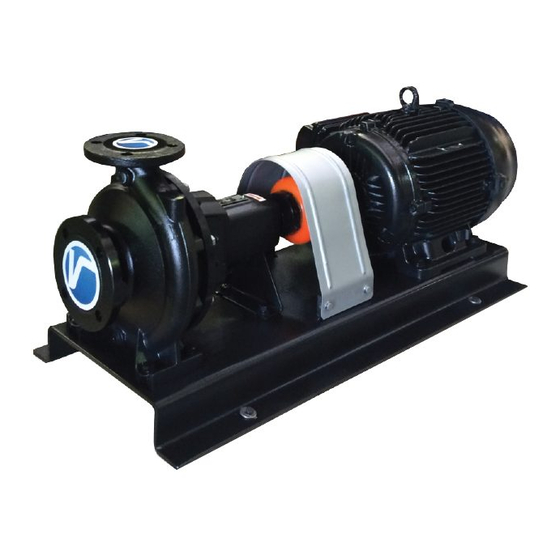
Table of Contents
Advertisement
Quick Links
Advertisement
Table of Contents

Summarization of Contents
Safety Instructions
2.1 Definitions
Clarifies warning, caution, and note indicators used in the manual.
2.2 General Safety Considerations
Lists essential safety precautions for pump operation and handling.
2.3 Qualification and Training of Operating Personnel
Specifies requirements for personnel involved in pump operation and maintenance.
2.4 Risks due to non-compliance with Safety Instructions
Outlines potential dangers and liabilities from not following safety guidelines.
Equipment Description
3.1 Pumping Equipment, Main Components
Identifies and lists the primary parts of the pumping unit.
3.2 Identification Plate
Explains the information provided on the pump's identification plate.
3.3 N Series Sectional Cutting
Details the N Series centrifugal pump, including sectional views.
3.3.2 Description of N Series Pump Parts and Pieces
Provides a detailed list of pump components with their numerical designations.
3.3.3 N Series Pump Dimensions
Presents dimensional data for various N Series pump models.
Transportation, Storage and Handling
4.1 Transportation and Handling
Covers safe practices for moving and transporting the pumping equipment.
4.2 Factory Packaging and Protections
Describes the protective measures applied during packaging for shipment.
4.3 Storage Instructions
Provides guidelines for storing the pump to maintain its condition.
Installation
5.1 Checking the Pump on Arrival
Instructions for inspecting the pump upon delivery for damage or missing parts.
5.2 General Rules for Locating Pumps
Guidelines for selecting an appropriate and safe location for pump installation.
5.3 Foundations
Recommendations for creating a stable and non-vibrating foundation for the pump.
5.4 Anchor Bolts
Details on using anchor bolts to secure the pump base to the foundation.
5.5 Joints to Rigid Pipe System
Guidance on connecting piping to the pump without causing stress or misalignment.
5.6 Expansion Joint
Explains the use of expansion joints to manage thermal stresses and vibrations.
5.7 Alignment
Emphasizes the importance of proper pump and motor alignment for preventing failures.
Start-up
6.1 Before Start-up
Pre-commissioning checks and recommendations before initial pump operation.
6.2 Pump Priming
Step-by-step procedure for filling the pump and suction line with fluid before starting.
6.3 Minimum Flow Rate
Information on the required minimum flow rate based on fluid temperature.
6.4 Pumped Fluid Density
Discusses how pumped fluid density affects motor load and selection.
6.5 Engine Considerations
Checks and procedures related to the electric motor before starting.
6.6 Other General Operating Considerations
Additional important points for operating the pump and motor safely.
6.7 Start-up Check List
Comprehensive checklist for verifying all aspects before and after start-up.
Maintenance
7.1 General Considerations
Importance of periodic maintenance for performance and service life.
7.2 Pump Lubrication
Details on lubrication types (grease, oil) and procedures for N series pumps.
7.3 Engine Lubrication
Guidance on motor lubrication based on manufacturer recommendations and HP.
7.4 Electric Motor Drive
Notes on motor protection and periodic checks of electrical parameters.
7.5 Coupling
Importance of checking and maintaining the alignment of the shaft transmission.
7.6 Mechanical Seal
Description of standard mechanical seals, their components, and maintenance.
7.7 Rules for Assembly and Disassembly
Procedures and precautions for safely assembling and disassembling the pump.
Useful Tips
8.1 Flow Rate is Insufficient
Lists common causes and solutions for low pump flow rate.
8.2 Discharge Pressure is Insufficient
Identifies potential causes and remedies for inadequate discharge pressure.
8.3 Pump Overloads Motor
Explains reasons for motor overload and their solutions.
8.4 Abnormal Vibrations of Pumping Equipment
Outlines causes of abnormal vibrations and troubleshooting steps.
8.5 Pump Breaks Down After Start-up
Addresses common failure points and solutions after initial operation.









Need help?
Do you have a question about the N630 and is the answer not in the manual?
Questions and answers